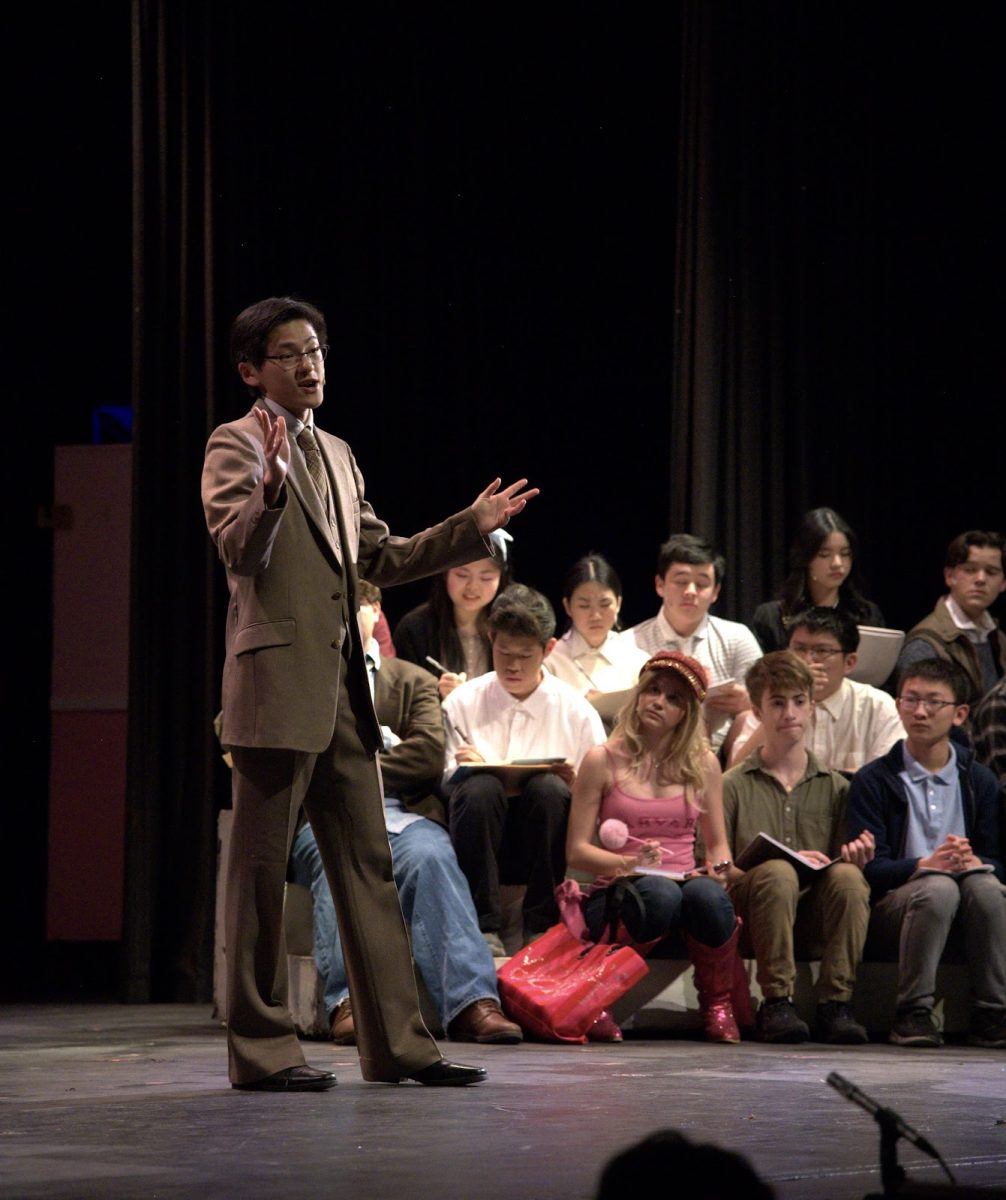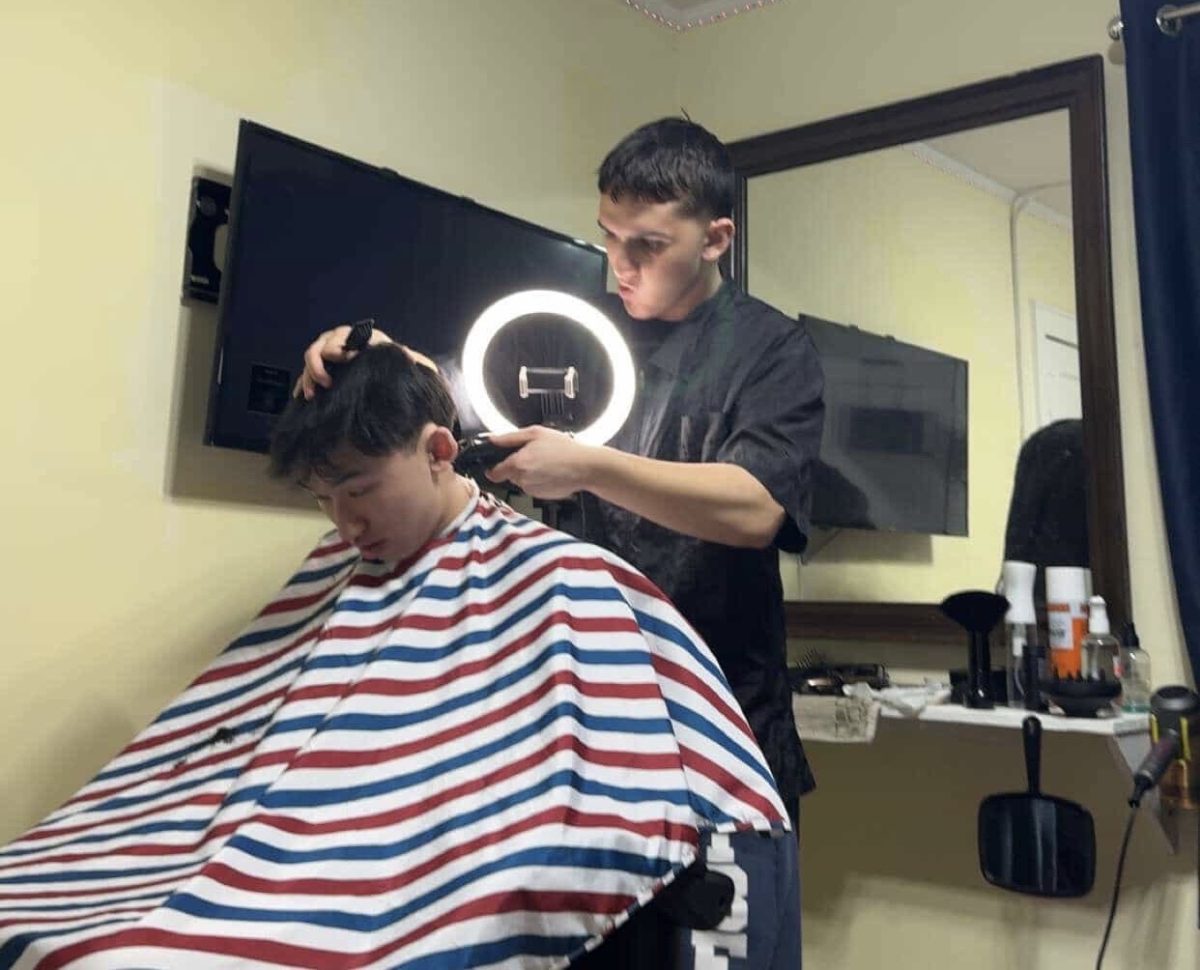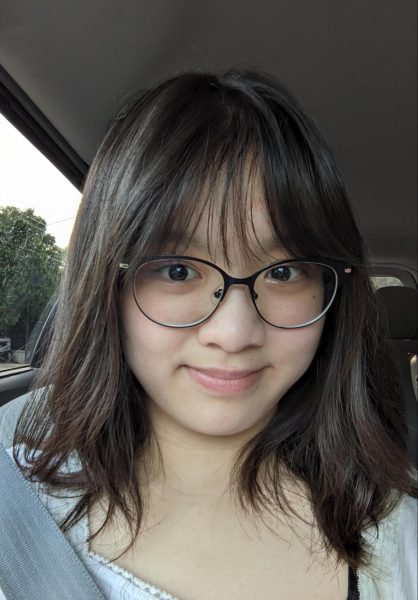A marching band and team of cheerleaders strut out from the wings of the stage, decked out in brilliant yellow and blue uniforms. As they sing the explosive opening of “What You Want,” Elle Woods bursts through a banner, presenting herself to Harvard in a hot pink jacket, silver shorts, and a shako lined with jewels and topped with a pink plume. Of course, Woods is bedazzled in glitter from head to toe.
Watching Legally Blonde from the audience, you might not recognize your classmates—or even your close friends. For two months, these actors created their characters throughout hours and hours of rigorous rehearsals. But, beyond the weeks of preparation lies a key component of this transformation: costumes.
“I wasn’t convinced that I was a college professor until I put on that brown suit,” said senior Ugin Sun, the actor who played Professor Callahan in Theatre South’s production of Legally Blonde. For a high school student, the transition from a 17-year-old to a Harvard Law School distinguished professor is rather bizarre. Suited in casual attire, a teenager might lack the confidence to lecture a class on the cutthroat nature of a law career to assert himself as the professor. It would be much harder to command attention dressed in a sweatshirt and jeans, wouldn’t it? By rehearsing in a costume so unlike his daily clothes, Sun found comfort in portraying a character completely different than himself. In a suit and tie, he more readily embraced the manipulative, charismatic, and predatory persona of his role.
When rehearsing in costume, the portrayal of a character’s behavior by an actor enlivens their performance. “I suppose it’s just the little things—for example, readjusting a tie. Knowing how [creative choices] look and adding on small mannerisms really humanizes the character,” said Sun. When the actor dresses the part, they immerse themself in the nuances of the character’s behavior. For instance, the actors who played the roles of Delta Nu sorority sisters truly discovered distinctive acting choices once they looked the part. These actors constructed the peppy image of these stereotypical Californian sorority girls with the assistance of their costume elements: colorful tights, vibrant skirts, and fun hairstyles. Jumping around, snapping, and whipping out cheerleader choreography in excitement suddenly became much more natural.
Needless to say, the quality of the costumes must be top-notch in order for this transformation to occur. Behind each character’s appearance is Lydia Gladstone, a costume designer with years of experience. Gladstone pays close attention to organizing the entire cast’s costumes in every Theatre South production. With many components to consider–wigs, shoes, tearaway costume velcro–she stays organized using a master spreadsheet where she records each costume piece. After researching the style and character archetypes of the production, she assesses her inventory to determine if she has the correct items, needs to find pieces, or has a piece that can be redesigned to fit the concept. In this lengthy process, she alters pieces after fittings and observes rehearsals to determine what needs to be tweaked or changed entirely. If Gladstone cannot source an item from Theatre South’s inventory, she scours her own basement filled with costumes, shoes, accessories, sewing supplies, you name it. She also borrows costume pieces from a close-knit network of other costumers on Long Island, but items must be purchased if the right color or size cannot be found.
Gladstone said, “I think it’s a really gratifying thing—especially when I work with kids—to see how excited they are about putting on a costume and transforming. You work for weeks and weeks on a part—your motivation, memorizing and blocking, and how you fit into the whole team of actors. Then you put on your costume, and you go, ‘Oh, this is who I am. I don’t have to do any work because the costume is doing most of the work for me. I just say the lines and let the artistry carry a lot of it.’”







